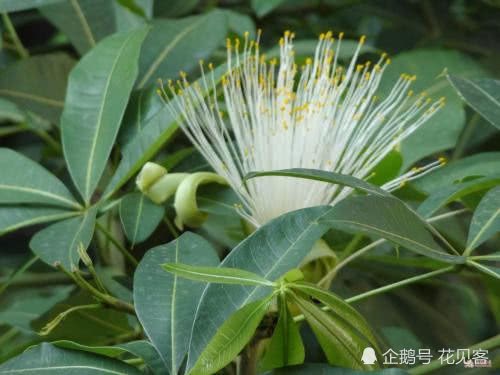This is what you have to do if you want to grow asparagus well.

Asparagus, also known as Yunpian pine, prickly winter, cloud bamboo.
Morphological characteristics
Asparagus can be several meters high. The root of asparagus is slightly fleshy, the stem is soft and tufted, slender. The stem has many branches, nearly smooth. Leafy branches usually clustered every 10-13, setose, slightly trigonous, 4-5 mm long; scalelike leaves slightly spiny spur or inconspicuous at base. Flowers usually axillary, white, shortly pedicellate per 1 × 3 (~ 4); perianth segments ca. 7 mm. The florescence is from September to October. The berries are about 67 mm in diameter, purple-black when ripe, with 1 to 3 seeds. The fruiting period is from winter to the following spring.
Growing environment
Asparagus likes warm, humid and semi-overcast ventilated environment, not cold-resistant in winter, not resistant to drought, can not pour too much water, roots will rot, and avoid direct sunlight in summer. A sandy soil rich in humus that is loose, fertile and well drained.
Soil cultivation is better. It is suitable to keep the room temperature between 12-18 ℃, ventilated and hot when it is more than 20 ℃. The suitable temperature for growth is 15-25 ℃, and the overwintering temperature is 5 ℃. Born in the mountains and cultivated in the garden
Cultivation techniques
1. Potted soil: the potted soil cultivated with asparagus should use fertile sandy loam, which should be warm and humid, rich in rotten branches and good drainage. Generally, it can be prepared in the proportion of 4 parts of garden soil, 2 parts of rotten leaves, 2 parts of compost soil and 1 part of sand.
It is necessary to change the soil and fatten it regularly. If excessive fertilization causes watering roots, you need to pour the pot to remove the fertilizer, and pour it with clean water, and then put it into the newcomer culture.
2. Watering: watering is the key point of asparagus cultivation and culture. too much watering basin soil is too wet, which is easy to cause root rot, and too little watering will lead to leaf tip scorching and yellowing. Therefore, in the process of watering, it depends on the weather, growth and
The basin soil depends on the dry and wet condition, so that if it is not dry or irrigated, it will be watered thoroughly. When it is hot and dry, it can be humidified and cooled by spraying leaves, and less water should be watered in winter.
3. Fertilization: asparagus is not good at fertilizer, but it can not be short of fertilizer. Limited by potted soil, asparagus culture must replenish nutrients in time to meet the growth requirements. In the process of fertilizing asparagus, it is necessary to apply more times and less amount, and do not apply thick fertilizer, otherwise it will cause leaf yellowing. Generally, you can choose to apply rotten thin liquid fertilizer once a month, and after the plant grows and finalizes, you can properly control and reduce fertilization. During the growing period, thin fertilizers containing ammonia and phosphorus should be applied once or twice a month to promote the growth of branches and leaves, as well as other liquid fertilizers. It should be noted that not too much fertilizer should be applied at flowering stage, and liquid fertilizer should be applied twice in May-June and September-October respectively.
4. Lighting: asparagus culture can not be exposed to the hot sun, hot season, should be placed in a cool and ventilated place. At the same time, asparagus flowering is not only afraid of wind, but also afraid of rain, should pay attention to good ventilation, good weather can be properly placed outside to receive sunlight. The temperature of potted asparagus in winter should be kept above 5 ℃ to avoid freezing.
5. Display: asparagus loves a clean and well-ventilated environment. If stimulated by harmful gases such as smoke, gas, pesticides, etc., the leaves will turn yellow and curl up and even die. Therefore, asparagus should be placed in a clean, well-ventilated environment, away from marble decorative materials that release mercury gas.
6. Plant pruning leafy branches missing pruning: when the growth position of leafy branches on the main branch is not ideal or missing for some reason, short pruning can be carried out in the appropriate position of the main branch to force the hidden buds to germinate. In general, the height of the cutting is the height of the leafy branch germination, the position of the thorn on the branch is the position of the leafy branch sprouting, and the greater the thickness of the branch, the higher the germination rate of hidden buds. Renewal pruning of the whole plant: if the branches and leaves of the whole plant are burnt by strong sunlight or the basin soil is too dry, lack of fertilizer and poor growth for some unknown reason, the whole plant can be renewed. When renewing and pruning, all the leafy branches can be cut off, but we should pay attention to the parts of the branches, because they determine whether the distribution of the remaining branches is uniform. Pruning in the growing season is generally high and easy to sprout new branches, and the amount of water should be appropriately reduced after pruning. Never make the basin soil too wet, otherwise it will lead to pruning.
Reproduction method
The asparagus plants of 3 ~ 5 years grow thickly and can be propagated separately. Ramet selection was carried out when changing pots in spring. With a sharp knife, the tufted stems and roots were divided into 2-3 clumps, so that each clump contained 3-5 branches and buds, and then planted in the pot. When ramet, damage the root system as little as possible, water thoroughly after planting, put it in a semi-shady place, and pay attention to moisturizing and shading. Watering should be controlled properly in the future, otherwise it is easy to cause yellow leaves.
- Prev

Use it to raise rich trees with luxuriant leaves and fruit bigger than their fists.
The rich tree is a favorite green plant for many flower friends, with beautiful plant type and emerald green stems and leaves, which is a very popular indoor ornamental plant with the meaning of "splendor and wealth". Some florists report that they have been raising them for several years.
- Next

If I had known that asparagus was so cultivated, how could it have yellow leaves?
Today I will tell you about asparagus yellow leaves! Anyone who raises asparagus knows that the most distressing thing is that it is prone to yellow leaves! But asparagus yellow leaf has two kinds: first, the whole leaf is light yellow, not emerald green asparagus appears this kind of yellow leaf, has two reasons: 1, pendulum.
Related
- Wuhan Hospital Iron Tree Blooming Result Was Instantly Frightened by the Gardener Master
- Which variety of camellia is the most fragrant and best? Which one do you like best?
- What is the small blue coat, the breeding methods and matters needing attention of the succulent plant
- Dormancy time and maintenance management of succulent plants during dormancy
- Minas succulent how to raise, Minas succulent plant pictures
- What are the varieties of winter succulent plants
- How to raise succulent plants in twelve rolls? let's take a look at some experience of breeding twelve rolls.
- Attention should be paid to water control for succulent plants during dormant period (winter and summer)
- Watering experience of twelve rolls of succulent plants
- Techniques for fertilizing succulent plants. An article will let you know how to fertilize succulent plants.

